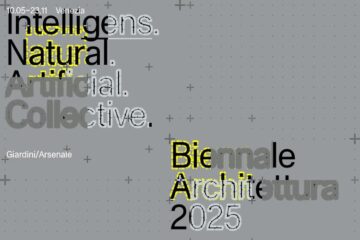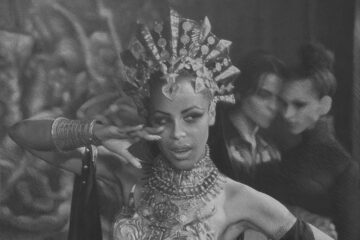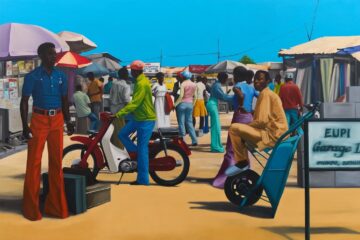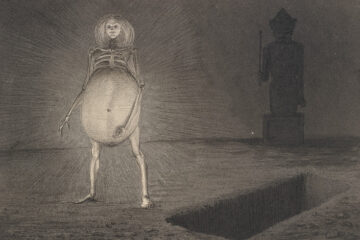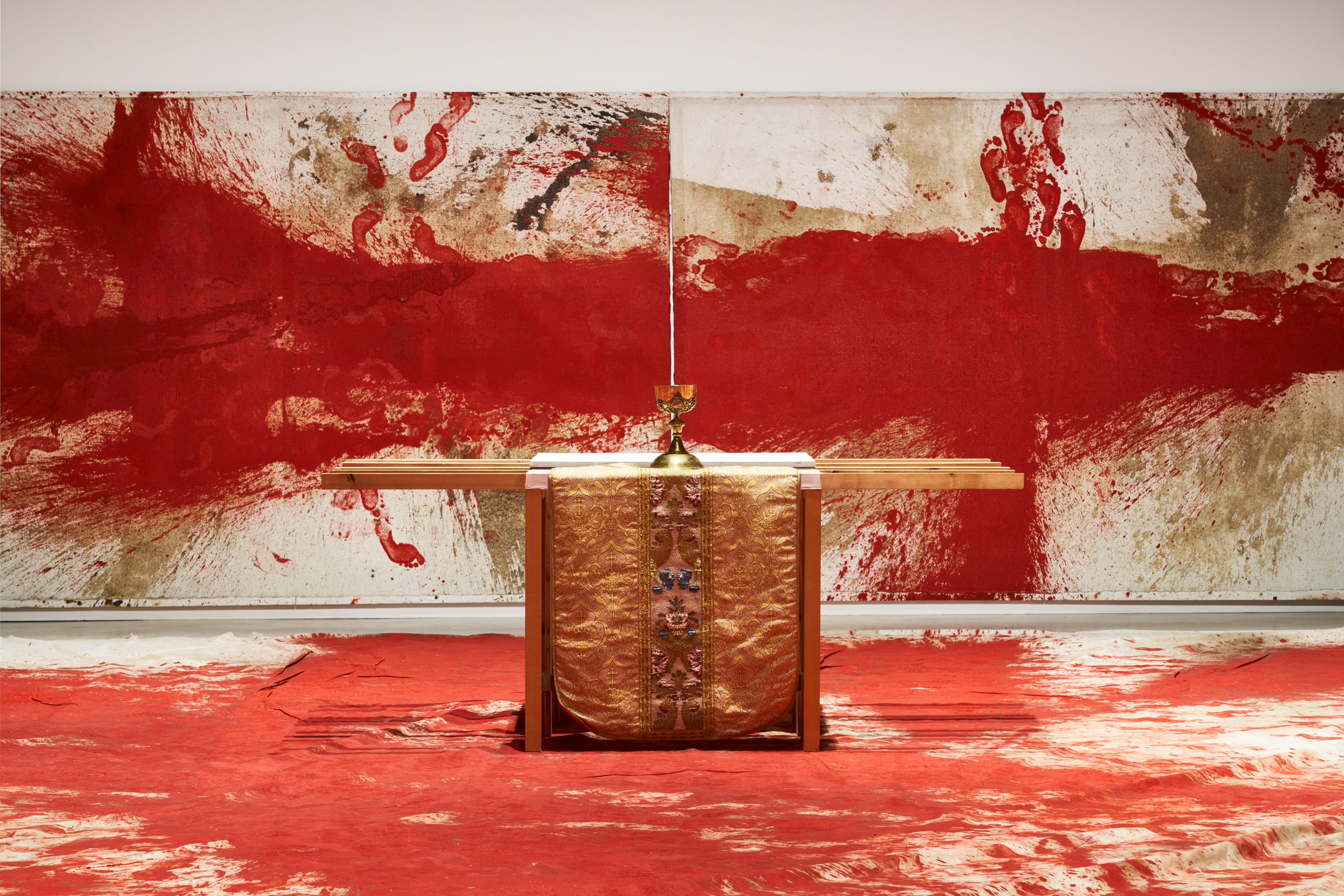
Hermann Nitsch‘s art is theatrical, physical, participatory, totalizing. Among the founders of Viennese Actionism, he considered the creative act, the action of painting, as the core of his artistic practice. The relics and paintings resulting from his actions, immediately reveal their genesis, made up of gestures, drips, splashes and “violations” of blank canvases through color, blood, wine and organic substances.
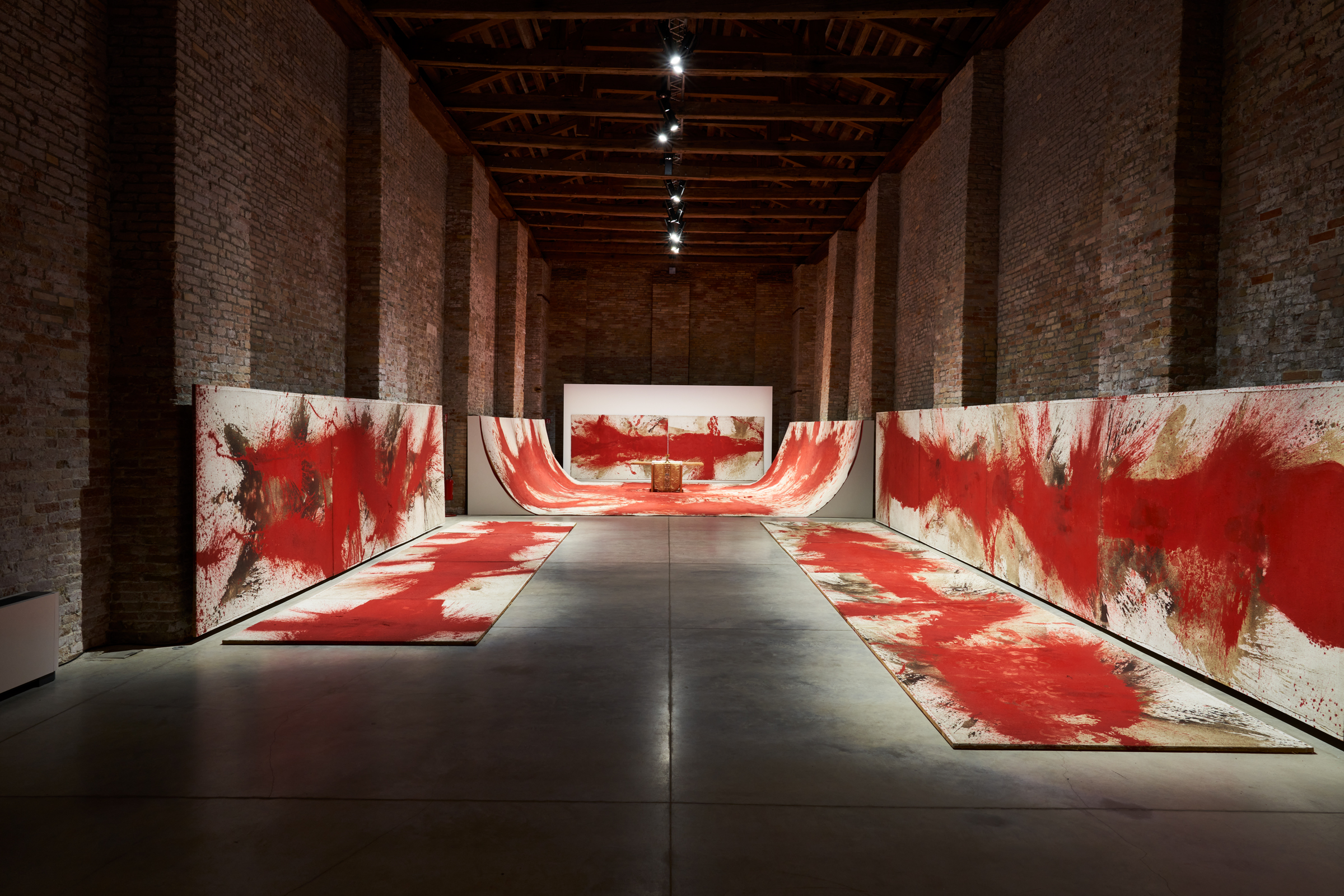
Always in search of strong forms of expression, of an intense and sensual language, around 1958 he realized that the verbal language, even if intense as in Greek tragedies, is not enough for him. Nitsch wanted to provide viewers with immediate and strong feelings, involving all their senses. Thus, with the formulation of his Orgien Mysterien Theater (Theater of Orgies and Mysteries) he created a total work of art to be experienced with all the senses: participants in his performances must taste, smell, see, hear and touch.
He created real events whose sensual intensity should have deeply moved the participants in the performance. During his actions, the paint was mixed with odorous substances, with liquids such as blood, vinegar, wine, milk, egg yolk, etc. The paint was poured and splashed on a surface and then smeared; its materiality was intensified and experienced, and the painting process became an event to be lived.
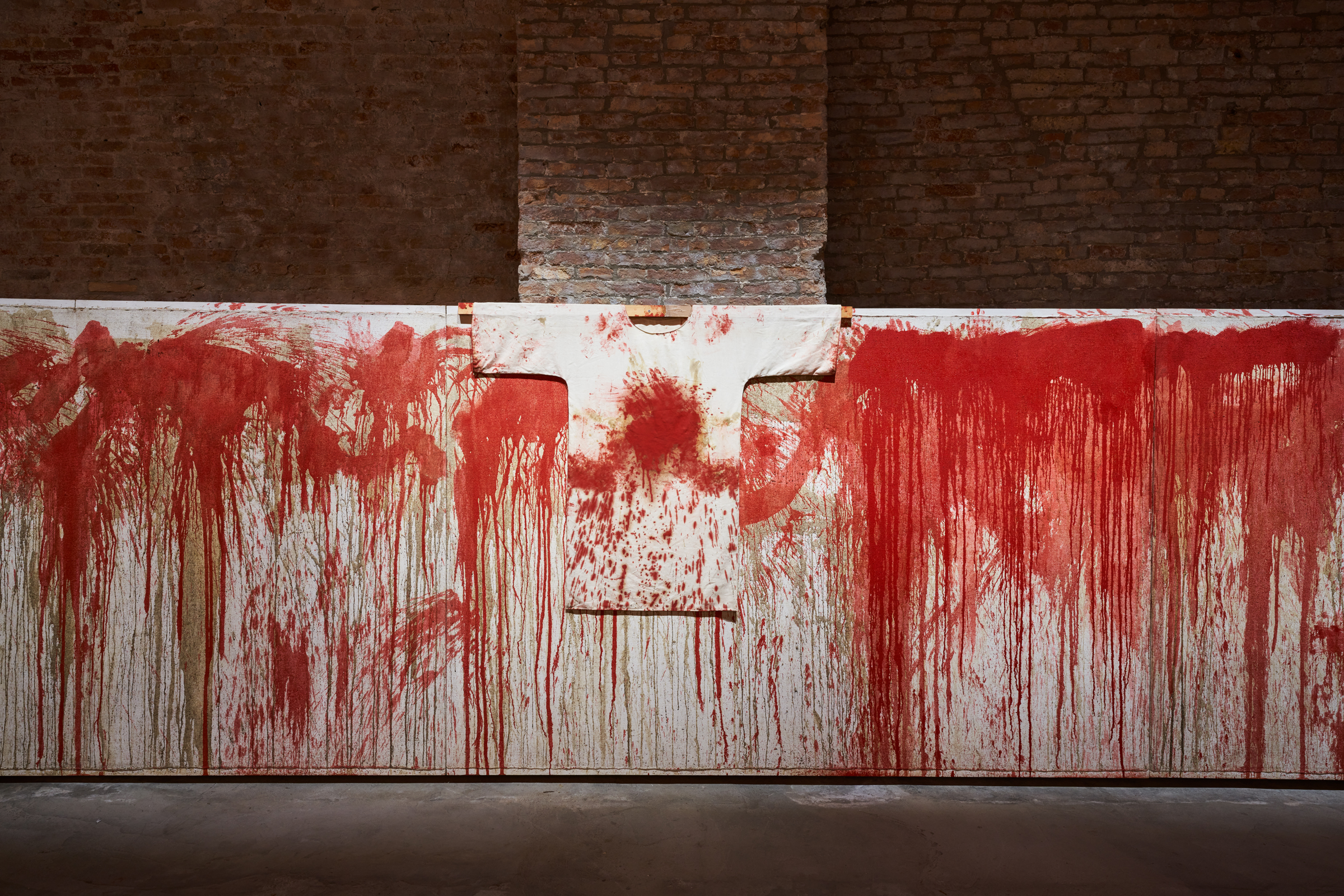
In 1987, the Secession in Vienna became the temple of Nitsch’s synaesthetic ritual. From February 18 to 21, Nitsch staged his 20. malaktion (20th painting action) that resulted in the creation of 52 works (including a 20x5m poured painting and a 10x10m splatter painting, among Nitsch’s largest works ever), 3 tunics framed in cross-shaped vitrines and various objects used during the performance.
The pictorial actionist environment that resulted from his performance was intended for Nitsch to bring about a prenatal experience, a return to the womb: “I wished to enclose myself as if in my mother’s womb. I wanted to paint all four walls.”
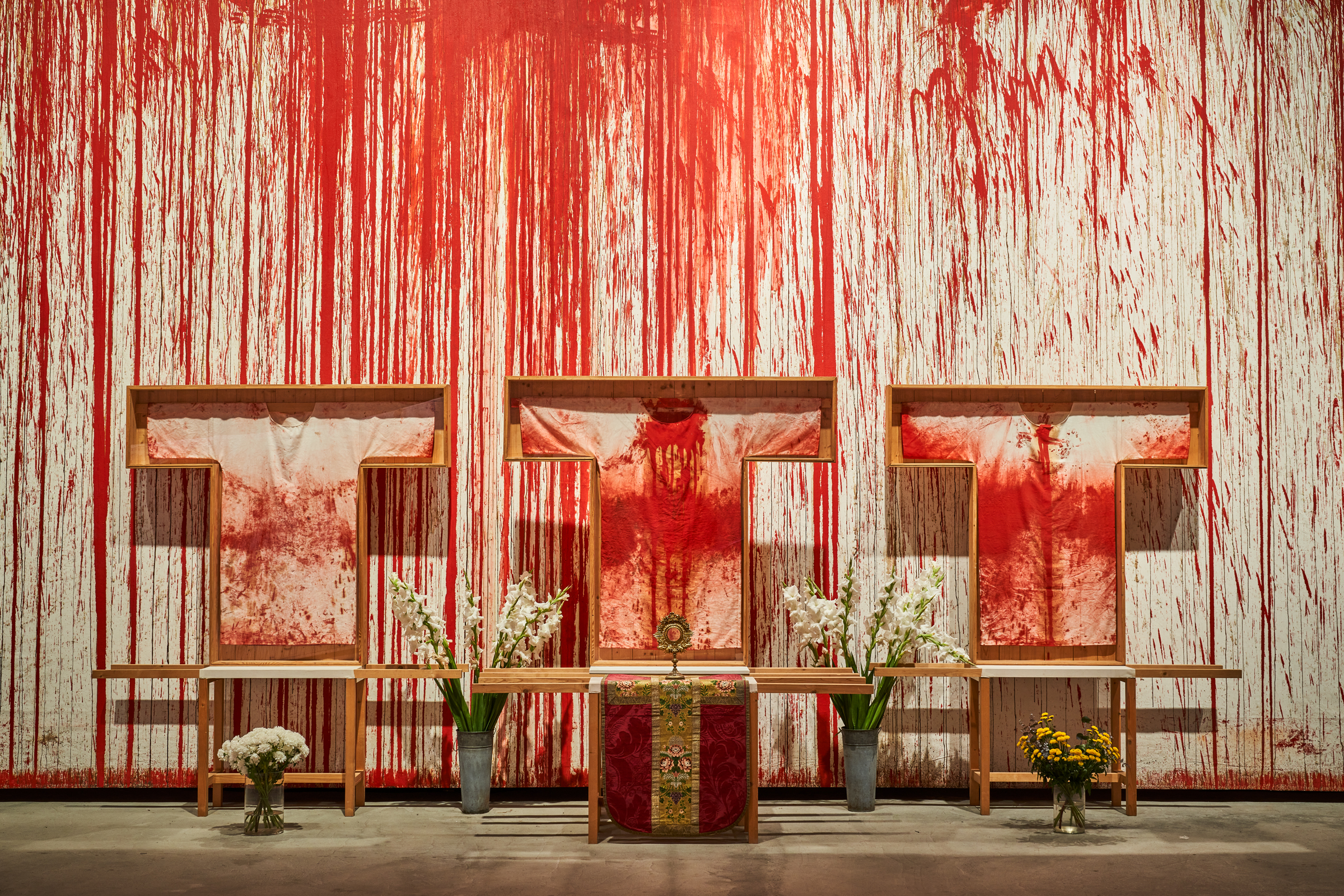
The entire corpus of works from the 20. malaktion is now part of the Helmut Essl collection. It is the only case in which all the works resulted from a single Nitsch’s action are preserved in a single collection. The exhibition dedicated to the 20. malaktion and hosted in Venice until July 20, 2022, presents the entire action for the first time in Italy since its creation in Vienna.
The reproposition of the installation in Venice aims to be as faithful as possible to the original disposition of the works at the Secession, while having to adapt the layout to the architectural differences of the Venetian venue – the Oficine 800 in Giudecca. Divided into two rooms (unlike the original single space), the exhibition dedicates one room to the splatter paintings, and one room to the poured paintings.
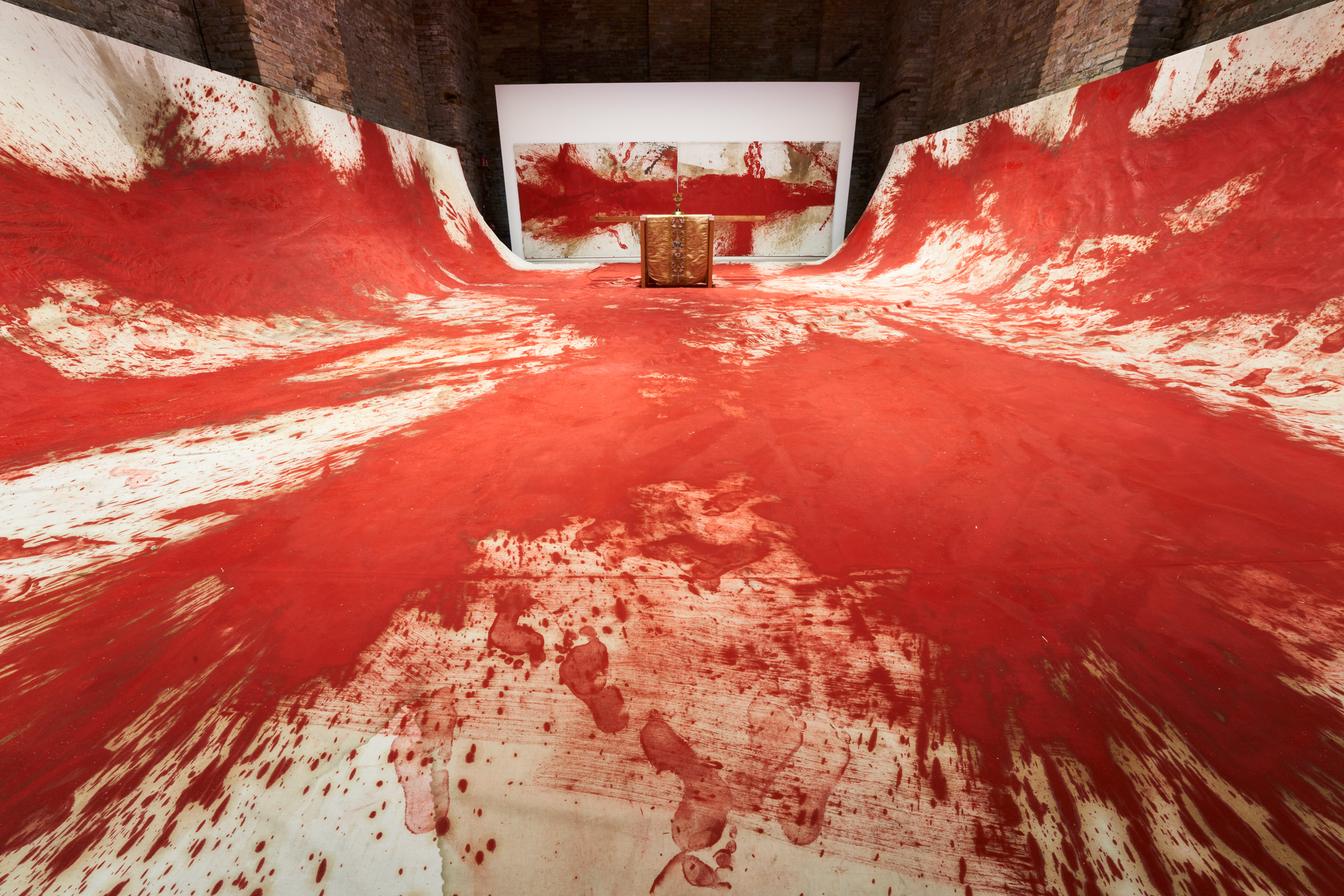
The exhibition “Hermann Nitsch, 20th Painting Action” is presented by Helmut Essl’s Private Collection in collaboration with the Hermann Nitsch Foundation, and it’s organized by Zuecca Projects in collaboration with Galerie Kandlhofer.
Hermann Nitsch, 20th Painting Action
Vienna 1987 – Venice 2022
19.04.2022 – 20.07.2022
Discover more: www.zueccaprojects.org
